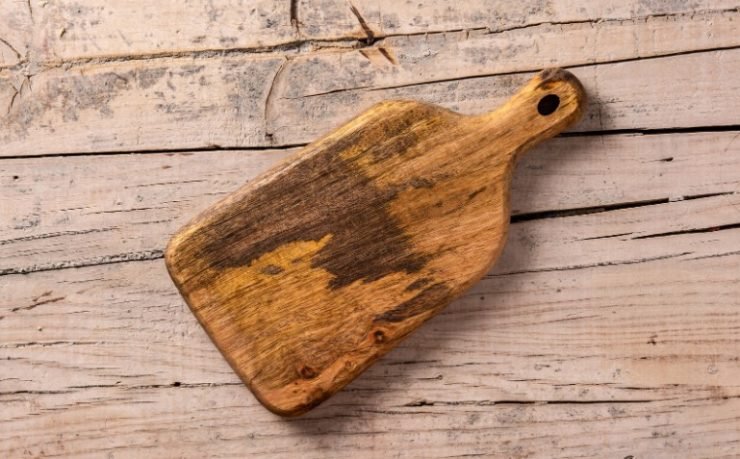With proper care and maintenance, a wood cutting board is the kind of cutting surface you can work on for a lifetime.
Wood cutting boards offer a smooth, hard surface that can be used for both vegetables and raw meats, and anything in between.
As a cook who has worked in several kitchens that used wood cutting boards, and as a dad who uses one at home, I’ll share a few practical tips on how to clean, sanitize, and maintain your wood cutting boards.
In This Article
Hand Wash Your Board With Hot And Soapy Water
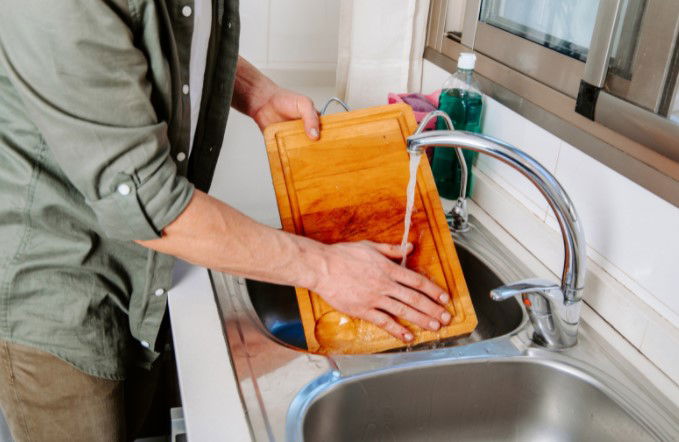
Always clean your board after every use. Leaving a cutting board out with food remnants and moisture on it will promote bacteria growth.
Unlike plastic or polycarbonate cutting boards, I highly recommend against putting a wood cutting board in the dishwasher. This can lead to warping, strip away protective oils, and make it more prone to cracking.
I wash my wood cutting board in the sink with a hot and soapy sponge, making sure to clean both sides and all edges.
Rinse the board under hot running water, but do not submerge it in water. Submerging in water is unnecessary and can lead to warping.
After the board is fully rinsed, place it in a rack on its side so that it can dry evenly.
Rub Your Board With Diluted Bleach Or An Acid
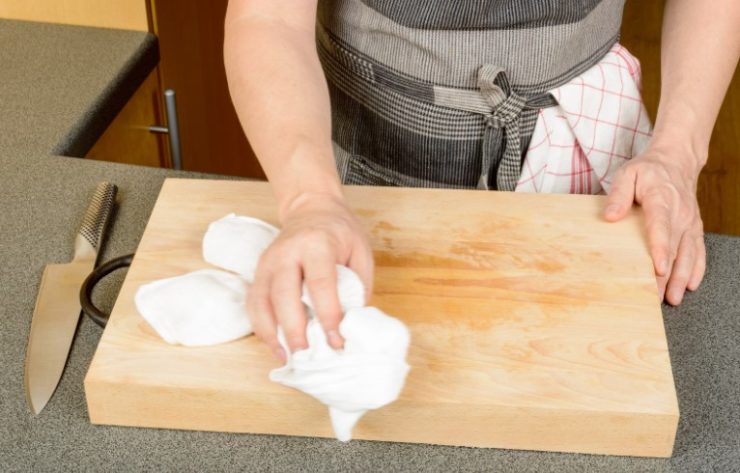
When your board is completely dry, treating it with diluted bleach or acid will disinfect it of any microbes.
If you’re using diluted bleach the proportions should be 2 tablespoons of bleach per 1 quart of room temperature water.
You can keep diluted bleach handy in a spray bottle, and it doubles as a general cleaning solution.
Use a spray bottle to spray the diluted bleach solution on the board, or dip a paper or kitchen towel into it. A few sprays will do. There is no need to oversaturate it. Even diluted bleach has a strong odor that you’ll want to minimize.
Let the board dry.
You can use the same method to rub an acid like vinegar, lemon or lime juice into the board to kill any bacteria.
Each acid has its respective odors and scents, so it comes down to personal preference on what you might find offensive or more pleasant.
For what it’s worth, vinegar is also a lot cheaper than lemon or lime juice.
At one restaurant where I worked, one manager had the cooks finish off the flat top grills with lemon juice after they were fully cleaned. A new manager that was more penny-conscious took over, and the practice of sanitizing with lemon juice was replaced with sanitizing with vinegar.
Oil Your Board
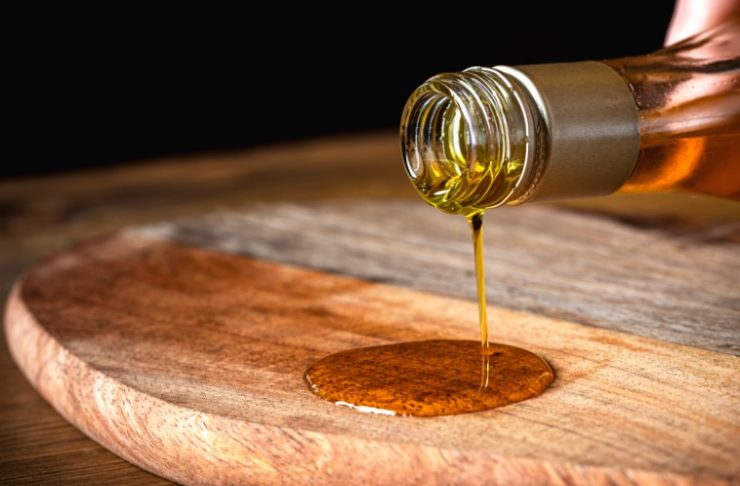
Oil your wood cutting board when it is clean, dry, and sanitized, with a food safe mineral oil.
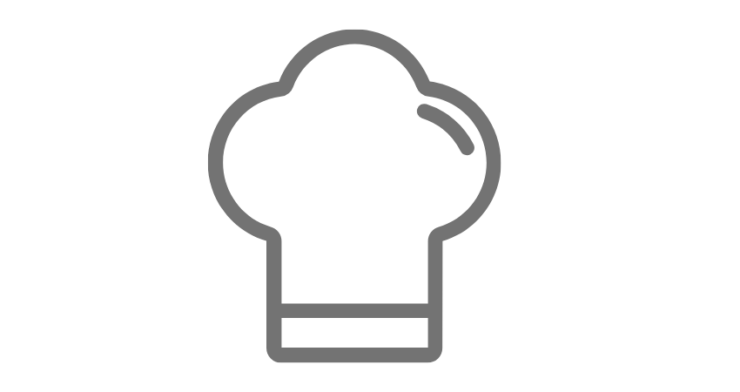
“Food safe” is the key here, because mineral oil can act as a laxative.
Avoid using cooking oils like olive, canola, vegetable, peanut, or coconut, because they can go rancid.
The process is relatively simple.
Put a few drops of oil on a kitchen towel and rub it into both sides of the board and all of its edges in small, circular motions.
Oil will help prevent the wood from drying out and splitting.
You don’t need to oil your board after every use. A good signal to look for is this – if you can put a drop of water on it and it doesn’t absorb into the wood right away, you still have a healthy coat of oil on your board.
I personally oil my board once or twice a month.
Plastic vs. Wood Cutting Boards
When it comes down to it, if you properly clean and maintain your cutting surfaces, the material of cutting boards comes down to personal preference.
If you don’t have time to hand wash a cutting board after every use, being able to put a plastic cutting board in the dishwasher is a big advantage.
Another timesaver is that plastic cutting boards don’t need to be oiled regularly.
There is a public perception that plastic or polycarbonate surfaces are inherently safer, but this is not the case. Wood actually has antimicrobial properties. The capillary nature of wood grains can draw moisture from bacteria, killing them after the wood dries.
I do like to cut on wood cutting boards because I like the feel better.
I also keep a few around that function more aesthetically as cheese and cracker, charcuterie, or crudite presentations when I need them.
When Is It Time For A New Board?
This doesn’t just apply to wood cutting boards, but if there are any deep cracks or fissures in your cutting board, it’s time to get a new one.
Deep fissures and cracks can harbor bacteria because of how difficult it can be to fully wash and sanitize them.
If the fissures or cracks are not too severe, sanding a wood cutting board can breathe more life into it.
Plastic cutting boards can be sanded too, but microplastics can be more harmful to the environment.
Frequently Asked Questions
Does vinegar kill cutting board bacteria?
Yes. Vinegar has antimicrobial properties that can kill bacteria and viruses. If you are using vinegar, apply it after you have hand washed and dried your cutting board.
Are wood cutting boards sanitary?
Wood cutting boards are just as safe as any other cutting surface. Bacteria can thrive in fissures of plastic that can be hard to be fully cleaned and sanitized.
How often should a cutting board be sanitized?
All cutting surfaces should be cleaned and sanitized after every use.
